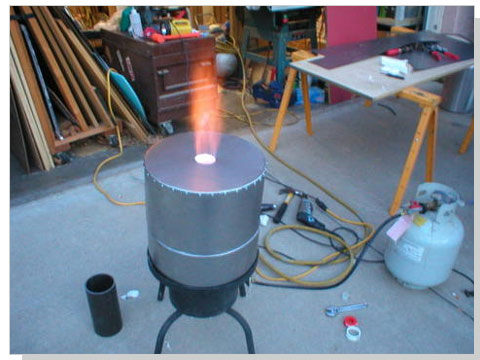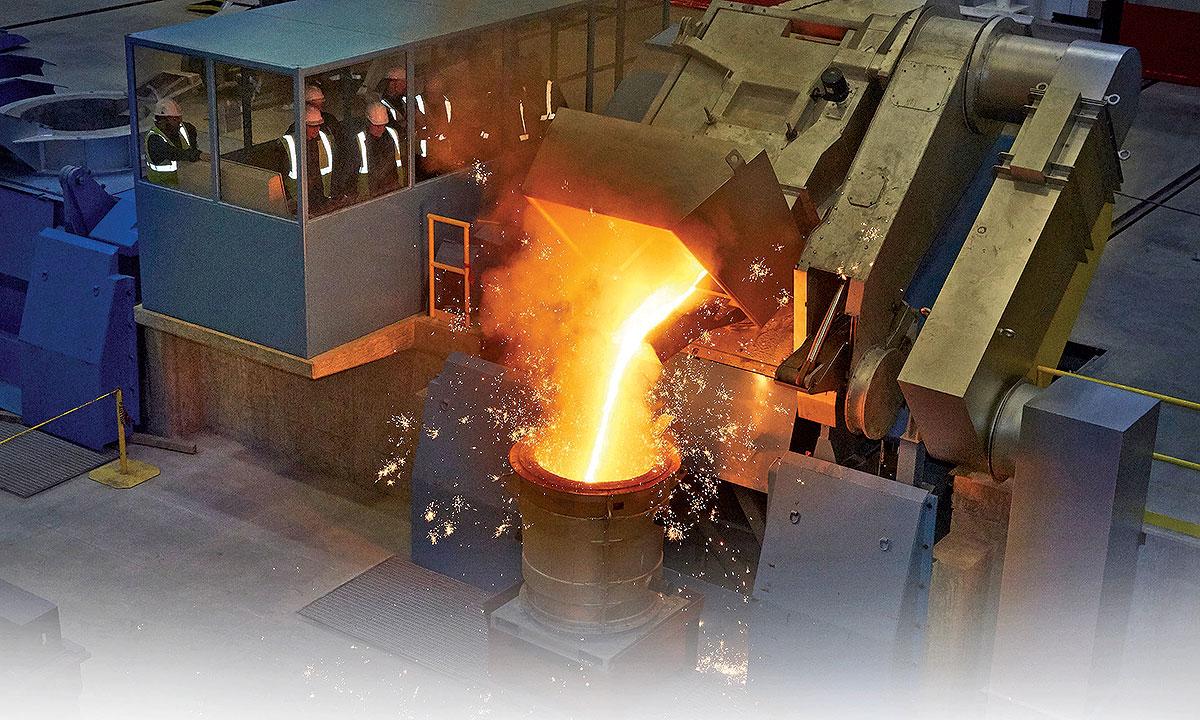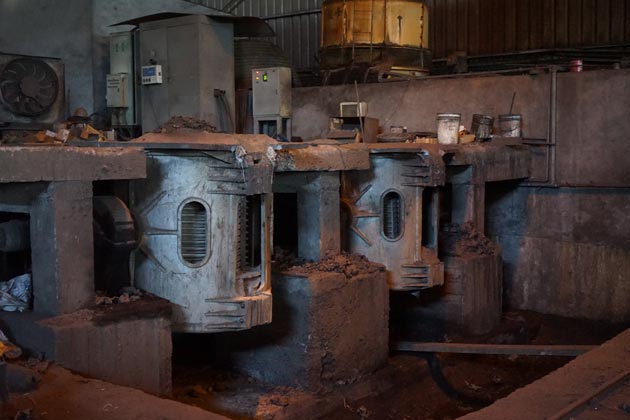Environmental impact in today’s Aluminum Foundry operations
Wiki Article
Discover the Cutting-edge Methods Used in a Metal Foundry for Superior Casting Results
In today's affordable production landscape, metal foundries are increasingly adopting innovative techniques to enhance spreading outcomes - Aluminum Foundry. Advanced computer system simulations enable specific modeling of molten metal behavior, while 3D printing enables fast manufacturing of complex mold and mildews. Additionally, environment-friendly materials and automation improve procedures. These developments guarantee significant improvements in effectiveness and quality control. The impact of these innovations on sustainability and manufacturing methods stays to be fully explored.Advanced Computer System Simulations in Metal Casting
Advanced computer simulations have revolutionized the metal casting process by enhancing precision and efficiency. These advanced tools allow engineers to create virtual versions of actors parts, allowing them to examine and predict the habits of liquified metal throughout the casting stage. By mimicing various parameters such as temperature level, circulation price, and cooling rates, producers can identify possible issues prior to physical production begins.This aggressive method decreases waste and reduces pricey mistakes, ultimately bring about boosted item high quality. Furthermore, simulations facilitate the optimization of mold and mildew styles, making sure that they meet the details demands of each job. The integration of computational liquid characteristics (CFD) and limited element evaluation (FEA) further adds to the accuracy of these simulations, offering understandings that were previously unattainable. Consequently, progressed computer simulations have actually ended up being a vital element of modern-day metal foundries, considerably progressing the market's capabilities.
3D Printing for Mold And Mildews and Patterns
3D printing has arised as a groundbreaking method for developing molds and patterns in the metal foundry sector. This modern technology allows the quick production of intricate geometries that conventional production methods struggle to accomplish. By using additive manufacturing, foundries can produce intricate styles with lowered preparations and material waste. The capability to generate mold and mildews on demand enables for higher versatility in design iterations, facilitating faster prototyping and modifications.In addition, 3D printing can utilize a range of products, consisting of plastics and metals, tailored to certain casting demands. This flexibility boosts the precision of molds, resulting in superior spreading outcomes with enhanced surface coatings. Furthermore, the decrease in the variety of components called for streamlines setting up processes, even more optimizing manufacturing efficiency. As foundries remain to take on 3D printing, they are positioned to redefine industry requirements, paving the way for advancement and improved efficiency in metal casting operations.
Eco-Friendly Products and Processes
As the metal foundry market deals with enhancing pressure to decrease its ecological impact, the adoption of eco-friendly materials and procedures has actually become vital. Factories are now exploring lasting alternatives to standard products, such as using recycled metals and bio-based binders. These products not just minimize waste however additionally lower power intake during production.In addition, advancements in sand spreading methods have brought about making use of synthetic sands that are much less unsafe to the setting. Shops are likewise implementing innovative procedures like molten metal therapy that decreases emissions and boosts the quality of actors products.
Water-based coatings have replaced toxic solvents, advertising a more secure job setting. By integrating these eco-friendly techniques, metal foundries can considerably reduce their environmental influence while maintaining top quality casting outcomes. This shift not just benefits the atmosphere yet likewise aligns with the expanding customer demand for lasting manufacturing options
Automation and Robotics in Foundry Procedures
While the metal foundry market welcomes development, the assimilation of automation and robotics is transforming operations considerably. Automated systems simplify processes such as mold making, metal pouring, and casting ending up, greatly enhancing efficiency. Robotics assist in the handling of hefty products, reducing the risk of work environment injuries and making sure safer environments.
Even more, using automated assisted automobiles (AGVs) enhances material transportation within facilities, guaranteeing prompt delivery of parts to proper workstations. By carrying out these technologies, foundries can adapt to rising and fall needs with higher agility, inevitably causing improved productivity and competitiveness on the market. As automation and robotics remain to evolve, they hold the potential to redefine typical foundry practices and drive further improvements in casting strategies.
Real-Time Tracking and Quality Assurance Techniques
The improvements in automation and investigate this site robotics have led the means for much more advanced strategies to quality assurance in metal foundries. Real-time monitoring systems use sophisticated sensing units and data analytics to track essential specifications throughout the spreading process. These systems constantly analyze variables such as stress, temperature level, and material composition, allowing immediate detection of inconsistencies from established requirements.Quality control techniques now incorporate maker learning algorithms that examine Learn More Here historic information to predict potential issues before they occur. This positive technique decreases waste and boosts general manufacturing performance. In addition, incorporated responses loopholes permit for quick adjustments, ensuring that each casting fulfills rigorous top quality needs.
The implementation of electronic twins-- virtual replicas of physical properties-- has also revolutionized quality control, enabling designers to mimic and enhance processes in real-time. With each other, these innovative methods substantially boost the dependability and high quality of spreadings, establishing new market requirements in metal foundry operations.
Frequently Asked Inquiries
What Sorts of Metals Are Typically Cast in Shops?
Typically cast steels in foundries include light weight aluminum, bronze, brass, and iron. Each metal shows one-of-a-kind buildings, making them suitable for various applications, such as automobile parts, equipment, and artistic sculptures, boosting their flexibility in manufacturing.
The length of time Does the Casting Process Commonly Take?
The spreading process normally takes several hours to days, depending upon elements such as the complexity of the mold and mildew, kind of metal used, and air conditioning requirements. Each stage influences the total period substantially.What Precaution Are in Location for Foundry Employees?

How Are Problems in Castings Identified and Addressed?
Defects in castings are identified via visual examinations and non-destructive testing approaches. As soon as spotted, foundry workers address them by improving procedures, readjusting product structures, and implementing restorative steps to guarantee quality and conformity with requirements.What Is the Price Array for Metal Casting Services?
The cost range for metal spreading solutions commonly ranges $1 to $10 per extra pound, relying on aspects such as material kind, complexity of the design, and manufacturing quantity, affecting overall have a peek at this website rates significantly.In today's competitive production landscape, metal foundries are increasingly adopting innovative methods to improve casting results. As the metal foundry market deals with increasing stress to decrease its ecological footprint, the fostering of green products and processes has actually become essential. Shops are currently exploring sustainable options to traditional materials, such as utilizing recycled steels and bio-based binders. By integrating these environmentally friendly practices, metal foundries can significantly lower their environmental effect while maintaining top quality spreading outcomes. The developments in automation and robotics have actually paved the method for extra sophisticated methods to high quality guarantee in metal foundries.
Report this wiki page